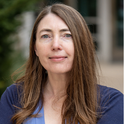Contemporary views of science education regard scientific inquiry and the ability to reason scientifically as the essential core of science education (American Association for the Advancement of Science (AAAS), 1993; Chinn & Malhotra, 2002; NRC, 1996; Krajcik et al, 1998; Songer et al, 2003). According to White and colleagues, scientific inquiry is an active process comprised of four primary components: theorizing, questioning and hypothesizing, investigating, analyzing and synthesizing (White & Frederiksen, 1998; White, Frederiksen & Collins, in preparation). Measuring these inquiry processes as well as the products that result from the processes has long been a challenge for educators and researchers (Marx et al, 2004); however, advances in technology and measurement are creating new possibilities for assessing both process and product (Pellegrino, Chudowsky & Glaser, 2001; Behrens, 2009). There are three themes that this symposium is addressing: what inquiry is and is not, the best way to teach inquiry, and the best way to measure inquiry. We have chosen a widely accepted definition of what inquiry is by White et al, described above, and are focusing our work on the latter, how to best measure inquiry.
Article
Measuring inquiry: New methods, promises & challenges
Proceedings of the International Conference of the Learning Sciences (ICLS)
Document Type
Conference Paper
Publisher
International Society of the Learning Sciences
Publication Date
7-2-2010
Disciplines
Abstract
Citation Information
Clarke-Midura, J., Mayrath, M., Dede, C. (2010). Measuring inquiry: New methods, promises & challenges. Proceedings of the International Conference of the Learning Sciences (ICLS), Chicago, June 28 – July 2.
